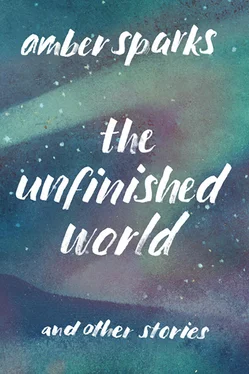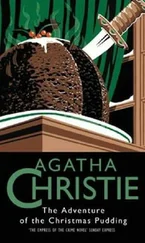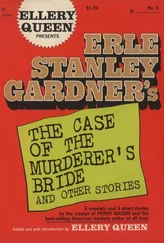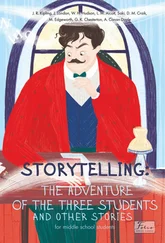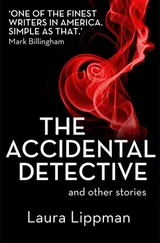I visited only once. My wife spent the visit tilting her head and chirruping at me in frustration. She finally ran at the only small window in the room, so many times that her head was bloodied and her hands and arms bruised all over. I tried to stop her but could not; she had become so small and light she could slip out of my arms as easily as she used to slip into them. I cried for the attendants and when I saw how they bound her, how they forced white pills into her small red mouth, I fainted and woke to find myself being driven home. I never returned.

I usually construct the death houses as large, simple structures with gently sloping roofs. Sometimes there are cupolas. But I never use spires or flourishes or gargoyles. No stone creatures of any kind, in fact.
It’s a matter of taste, of course, but I feel the death house should be much like a room in God’s own house, and would God’s house be a Gothic affair? Some of my clients seem to think so, but I can usually tempt them toward a more modest design. I make sure the building will stay dark and cool most of the time, and always include at least one large room for the dead and one small room for the watchman and his medical supplies.

One day the hospital wrote to tell me my wife was dead. She had escaped from her room somehow and had discovered an open window in an office from which to fly. She had broken almost every bone in her body, they said. I imagined her, hovering at the window the way she had done at home, reaching up to separate the edges of her life like chaff from the ball of clouds — then plummeting. Would she have known? I wondered. Would she have realized halfway down, checking her thin shoulder blades, surprised like anything that the wings she thought she saw that morning seemed to have disappeared like smoke?

I usually assist my employers in furnishing their Leichenhaus . The watchman’s room is kept comfortable, but spare, to prevent sleeping on the job. I suggest a chair, a table, a light, and a pack of playing cards. Also a cot and a small first-aid kit for attending to the dead if they suddenly become the living. I always make sure the openness of the large hall is not marred by any unnecessary furnishings. Only the Temporary Resting Containers should lie in this hall. I usually recommend that customers limit the number of Containers, to keep unpleasant odors to a minimum.
Sometimes, when I arrive, the mayors of the towns drape medals around my neck. Sometimes they present me with the oversized keys to their cities. Someone important makes a speech, the citizens clap, and the local inn agrees to put me up for free. Once a local artist painted my picture and it hangs in the central courthouse, I am told, even to this day. I have grown elderly and weak but the local people still describe me in hero words wherever I go, whenever I come to save them from their deaths.

I built the first Leichenhaus for my wife, of course. She was so damaged that they would not let me see her, not at first, but when I begged the doctors relented and brought me to the morgue. She was purple and black in places, and her head was a strange shape, and she looked flattened and out of joint, like a rag doll. But her pale face was still perfect, and her lips were still slightly O-shaped and pink, and her eyes were wide and sea-calm. She looked as though she were about to speak. So how could I bury her? I knew she was dead, of course I knew, but at the same time I doubted. She who had longed for sky and spurned four walls — how could I put her in a box? How could I shut her up in the earth with a face like that? I’d read Bruhier’s best-selling pamphlet, Dissertation sur l’incertitude des signes de la mort . It detailed the various ways to determine if a loved one is really dead: stabbing the nose or feet with sharp objects, pouring vinegar into the mouth, holding the fingers over flame, placing a mirror over the mouth to detect breath, pulling the tongue to facilitate artificial respiration, etc. I went out of my head, I demanded the doctors perform every one of these procedures, I shouted that they would never bury or burn her.
Instead I built the first Temporary Resting Container, just for her. I used an ordinary coffin, and attached a three-foot cord to a bell and a bell stand. I sawed off the top half of the coffin lid, and laid the remaining length of cord in the top half of the coffin itself. I laid her mangled body on the red velvet and tied the piece of cord to one swollen, broken finger. In case she woke, in case she rose, she could but move her finger and the bell would ring. To guard her I hired two former soldiers; around them I built a small shelter to keep out the rain and heat. I employed doctors to stay on call for seven days, ready at a moment’s notice to rush to my wife’s aid should she awaken. They all thought I was insane; I was insane. But after seven days, the madness left me in a rush and I consented to the burial of my wife. I was comforted. I was sure that the ending of our story was what it ought to be. I was sure it was really an ending.

I always suggest placing the Temporary Resting Containers in the middle of a large hall, in a harmonious and pleasing arrangement. This allows corpses awakened during the day to take in the full majesty of the stained glass windows, and may help to counter feelings of terror and confusion. Although I do not provide them, I also suggest placing flower arrangements around the Resting Containers; this aids in covering the unpleasant odors of rot and decay with more pleasing scents like violet, rose, and peony.
I usually do the hiring myself as far as death house personnel are concerned. I hire two to four watchmen, depending on the size of the facility, to guard the hall and administer medical aid if necessary. I look for watchmen who are alert, healthy, strong, incurious, and possessed of little or no imagination. This is very important, as it would be very bad for business if one of the watchmen frightened himself to death in a death house. The watchmen must also be trained a little in medicine, in case any simple emergency medical procedure need be performed before a doctor could be summoned. Basic first-aid training usually suffices.

I was a young man when my wife died. I am an old man now, and I am ready for death myself. I have built one hundred death houses and I have seen countless love stories ended and begun. I have become an expert in managing death, in easing life into sleep into death into darkness. It’s a slow process, but a good process. A necessary one.
And no, no one really comes back from the dead. Even in my beautiful, carefully built Leichenhausen. Even when the sun pours from the Kingdom of Heaven through St. Michael’s stained glass robes and shines on the faces of the dead like rubies, like wine, like blood.
Take Your Daughter to the Slaughter
Our fathers wake us before dawn. They wake us and we rise, confused at first, and then excited, remembering what today is. Remembering what we will become, with a little practice, a little patience. A steady eye and hand.
Today is the opening day of werewolf season. Today we leave our dresses, our heels, our crinolines and crystals in the closet, and we take our camouflage out of storage. We check the contents of our daypacks: map, matches, knife, first-aid kit, water, trail mix, tree-stand safety belt, compass. We shower and spray ourselves down with odor neutralizer.
Читать дальше
